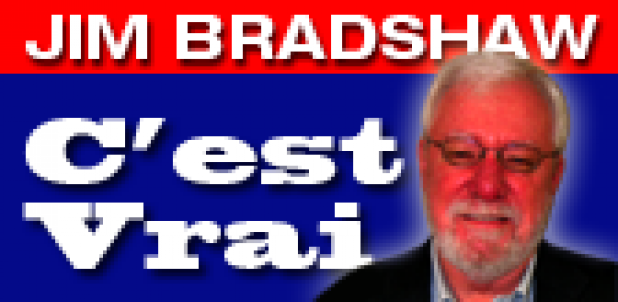
Jim Bradshaw: Trickery and deceit were all for good cause
Some time ago I wrote about Dr. Murphy Martin, who was for many years an extraordinary public health physician for a big part of south Louisiana. He wore many hats during his lifetime, but I didn’t know at that writing that he was also part of a top-secret World War II outfit that used its wits as its biggest weapon.
Dr. Martin was one of 1,200 hand-picked soldiers who served in a so-called “Ghost Army” that is credited with saving the lives of thousands of GIs through trickery. His son, Barry Martin, sent me details from the Congressional Record of an effort by Louisiana Sen. John Kennedy and others to bring these ghosts out of the mist.
The “army” was officially known as the 23rd Headquarters Special Troops, and its mission, in Army lingo, was “tactical deception.” In Kennedy’s words, it was simply “to fool Adolf Hitler.”
Kennedy called legislation to award the unit a Congressional Gold Medal “long overdue,” but that wasn’t all Congress’s fault. The work of the unit, even its existence, was top secret stuff until 1996, 40 years after the war’s end, and some of its history is still classified.
The other members from Louisiana were Alvin J. Picard of Vermilion Parish, Hilton Howell Railey and Jim Stegg, both of New Orleans; Thomas L. Raggio of Lake Charles; Roy L. Ravia of Calcasieu Parish; and Anderson B. Wilson of Slidell.
They were among a select group of soldiers recruited into the Ghost Army because of their creativity and, to put it bluntly, ability to “think sneaky.” They landed in France two weeks after D-Day and spent the rest of the war confusing the Germans. They used inflatable tanks, jeeps, trucks, and airplanes; dummy artillery weapons; fake radio transmissions; theatrical props; and anything else they could scheme up to stage more than 20 battlefield deceptions, some of them very close to the front lines.
“They handled top secret information, and were among some of America’s most promising artists, engineers, and signal professionals,” Kennedy said. Their performances, he said, “were illusions,” but “they occurred in the most dangerous spot in the war, on the front line of battle. … They put themselves at risk every day at the forefront of danger, and … used ingenious, innovative methods to mislead the enemy.”
One of their early assignments was to fake the construction of an artificial harbor on the coast of France. It was deadly business, not just fun, games, and theatrics. The idea of their ruse was to draw German artillery fire on themselves and away from a real harbor that was being used to land troops and materiel.
In another instance they used giant loudspeakers to broadcast the noise of tanks and trucks and men on the move. That bit of trickery by only 1,100 Ghost Army soldiers made the Germans think two divisions, 30,000 men, were heading toward them. Hitler diverted troops away from a real Allied operation to fight the ghosts who, their work done, silently slipped away.
They could create a fake airfield or troop bivouac area — complete with laundry hanging from lines — in only a few hours. In one instance they circled just two trucks, each with just two men visible near the rear opening, over and over again through the same crossroads, where faux MPs were stationed to direct the “heavy” traffic. German watchers reported a large convoy of trucks filled with troops.
Sometimes, they did simple play-acting.
Soldiers would spend time at French cafes near the front to “order some omelets and talk loose,” discussing fake military plans loud enough for any lurking spies to overhear them.
The Ghost Army’s improvised radio traffic was so convincing that in one case it fooled Axis Sally, the German radio propagandist, into reporting that an entire Allied division was preparing for battle in a spot where, at the time, there were no troops at all.
By the end of the war, the ghostly 23rd had seen action in France, Belgium, Luxembourg and Germany, befuddling German military planners and masking real Allied troop movements and deployments.
In a PBS documentary, Gen. Wesley Clarke called the work of the Ghost Army “the highest kind of creativity in the art of war.” In discussing a book about the unit, Tom Brokaw said their “highly imaginative and daring maneuvers … helped open the way for the final drive to Germany.”
Some of the descriptions make it sound like the Ghost Army soldiers were having great fun as they put on their illusions and scrambled enemy plans. Maybe sometimes they did.
But we also need to remember that they were using rubber tanks and dummy artillery; the Germans they were opposing had real tanks and real artillery that fired real shells.
A collection of Jim Bradshaw’s columns, Cajuns and Other Characters, is now available from Pelican Publishing. You can contact him at jimbradshaw4321@gmail.com or P.O. Box 1121, Washington LA 70589.
